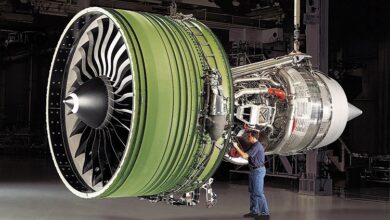Time Tracker vs. Timesheet: Understanding the Differences and Benefits
Efficient time tracking is important for measuring the productivity of your employees. Time tracking helps in keeping track of the employees, and motivates them to improve how they work if needed. Two methods are used for time tracking: Time Tracker and Manual Timesheets. In this blog we will get to know about the difference and benefits of a time tracker and timesheet, so you can conclude at the end what would be suitable for your business.
What is a Time Tracker?
A time tracker is an online tool to keep records of the employee’s working hours. It monitors and records time spent on various tasks or activities. It helps individuals or managers track time spent on various tasks to improve productivity, optimize resource allocation and manage effective workflow. It offers various features like:
- Automatically records the working hours of the employee in real time.
- Integration with other applications for seamless data share and effective communication.
- Generates detailed reports and analytics on time usage and productivity.
- Enables users to create and manage timesheets for invoicing purposes.
- Provides customization options to tailor according to specific user requirements.
What is a Timesheet?
A manual timesheet is a document or spreadsheet where employees manually record their working hours. When using a manual timesheet, employees or managers have to make sure that their working hours are accurately recorded by marking the start and finish times of each task or project.
These are usually used in a small size business with simpler time tracking needs because it can be difficult to track large numbers of employees. A standard timesheet includes name, date, start and end times, break and total hours worked.
Time Tracker vs. Timesheet: Understanding the Differences
When it comes to time tracking there are two options: Manual Timesheet and Time Tracker App. Understanding the difference between these two would help you in choosing the right option for your business:
| Basis | Time Tracker | Timesheet |
| Accuracy | It automatically records the accurate time spent on various activities minimizing the risk of errors. | It manually records the working hours of employees, which can lead to some errors like inaccurate estimated time. |
| Efficiency | It streamlines the process by automatically tracking hours in real time and saving valuable time. | It is time-consuming, especially for large teams or complex projects so it is less- effective. |
| Analysis & Reporting | It generates automated reports and analyses with the use of the information collected. | It offers limited analysis capabilities as it involves manual intervention. |
| Integration | It integrates seamlessly with other project management tools for effective communication and collaboration. | It lacks app integration and requires additional effort to synchronize data. |
| Transparency | It offers transparency by providing detailed insights into how time is allocated across different tasks. | It may lack transparency as they rely on individuals to accurately report their hours without detailed visibility of activities. |
| Accountability | It promotes accountability among team members as they can easily easily monitor their progress. | It can lead to some challenges in accountability. |
Time Tracker vs Timesheet: Understanding the Benefits
Time management is a crucial process in any business, so it is important to choose the right method to track the time of the employees. Each method offers distinct advantages as per the organizational needs. Let’s know the benefits of both these methods so you can choose the appropriate one for your business.
Time Tracker
- By automatically recording the amount of time spent on activities or projects, time-tracking software reduces the possibility of human mistakes that come with manual entry.
- Due to the automatic, real-time time tracking, it saves time by eliminating the necessity for manual data entry.
- It helps teams become more transparent and accountable by giving clear visibility into how time is spent on various tasks.
- Enables managers to examine productivity patterns and make data-driven decisions by producing thorough reports and analytics.
- Integrates with other applications and systems to enable smooth collaboration and data exchange.
Timesheet
- Manual timesheets require less setup or training because they are simple to use.
- Provides employees the freedom to manually enter time for different tasks and make adjustments to entries as needed.
- Since manual timesheets frequently don’t require an additional software investment, they are typically more economical for smaller teams or firms with tighter budgets.
- Customization is possible based on individual needs or preferences, as it can be easily done.
- It is appropriate for situations where internet connectivity may be restricted because it may be updated and accessed offline.
Wrapping Up
The decision between utilizing a Time Tracker and a Timesheet depends on organizational requirements. For small businesses with few employees, opting for a Timesheet would be a good choice. However, for larger firms, time tracker applications would be suitable due to the complexity associated with manual timesheets. Ultimately, the optimal solution depends upon factors such as team size, project intricacy and budget limitations. By selecting the appropriate approach, businesses can efficiently manage their time and resources and achieve success in today’s competitive environment.


